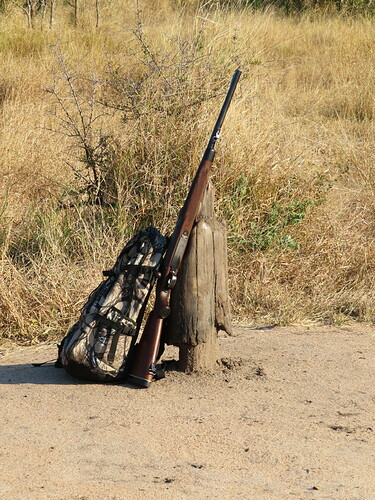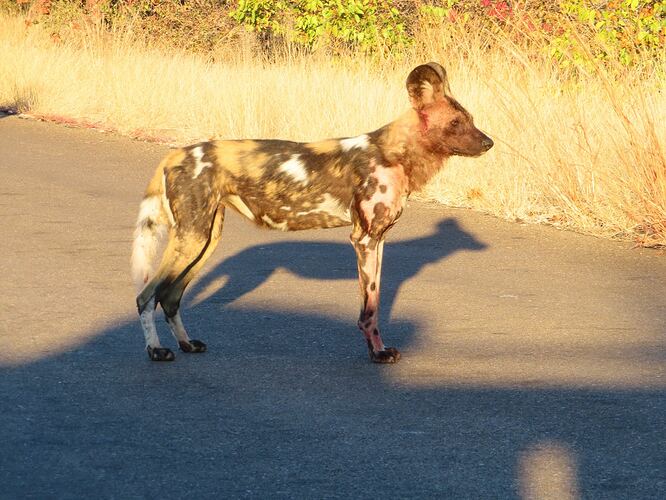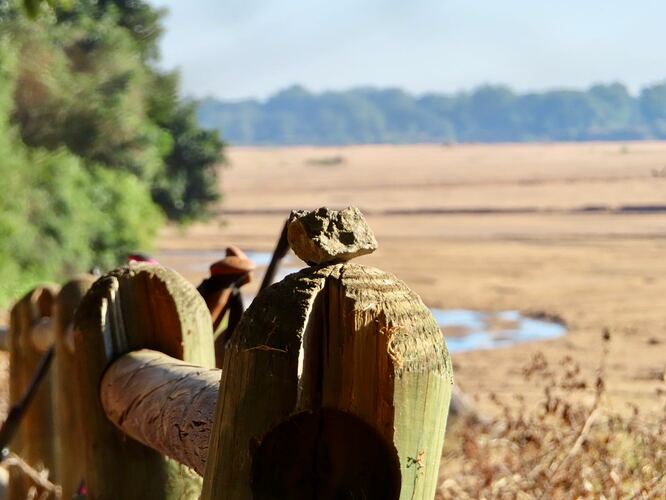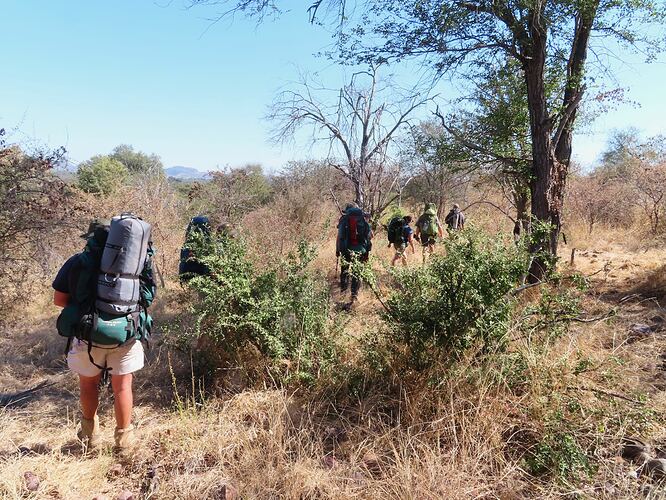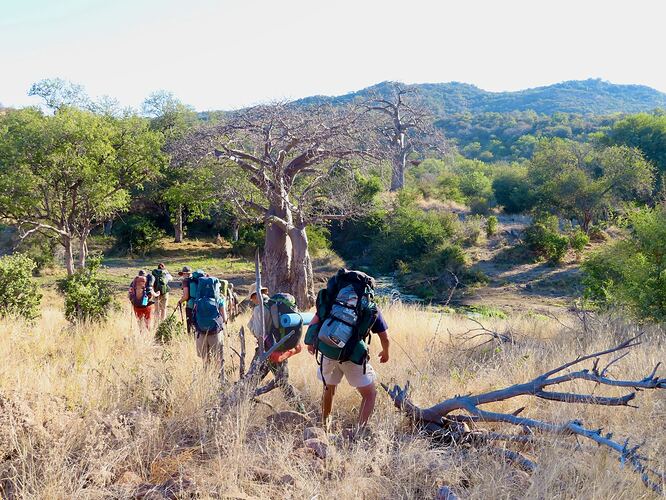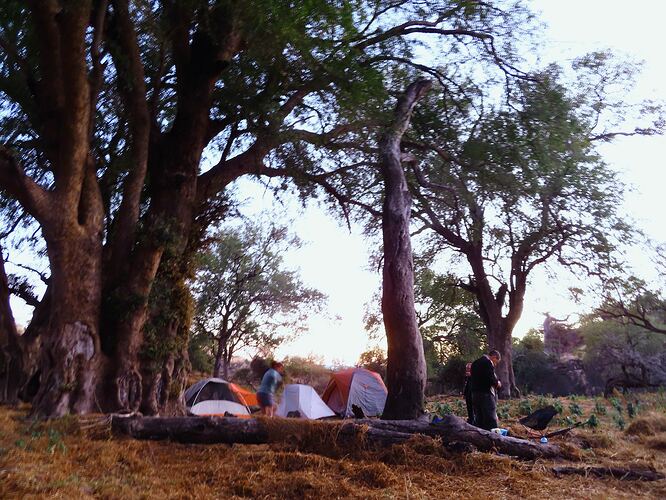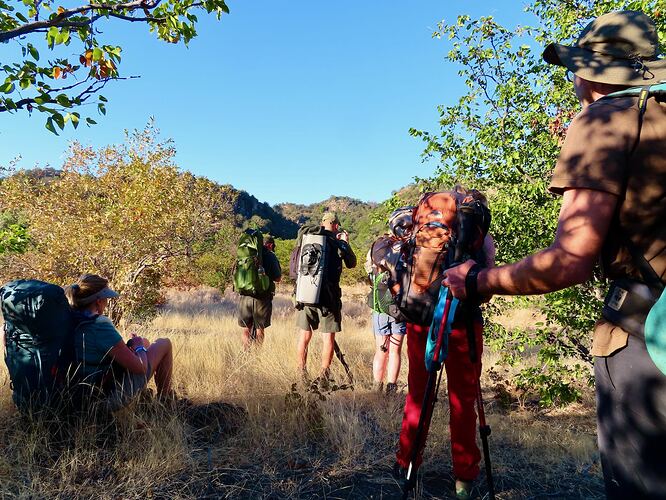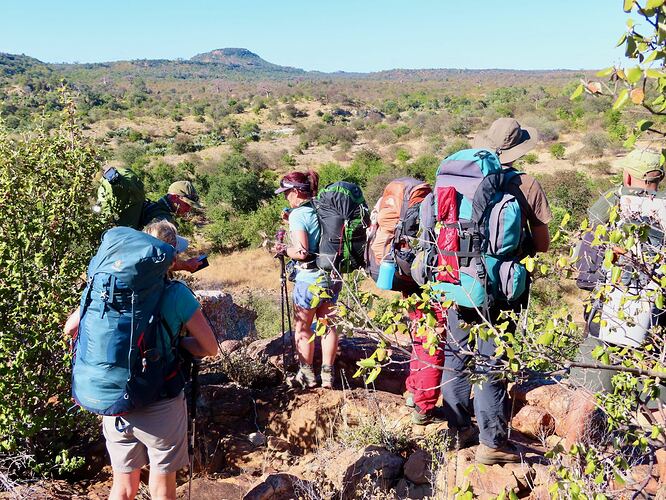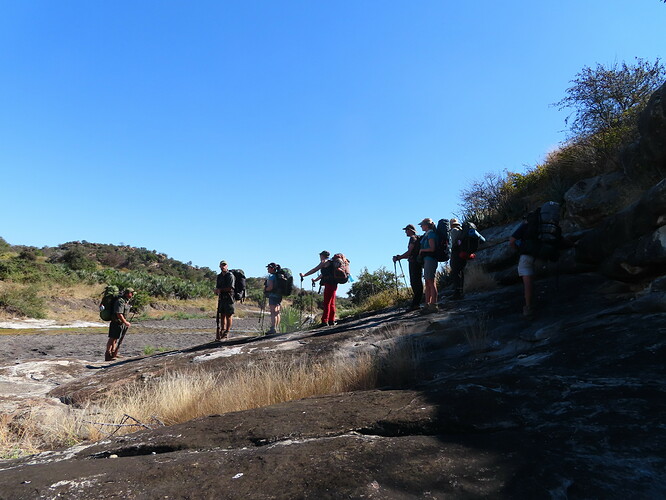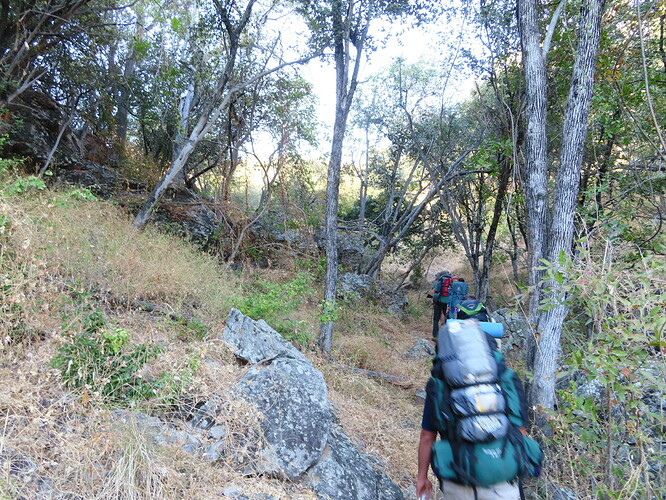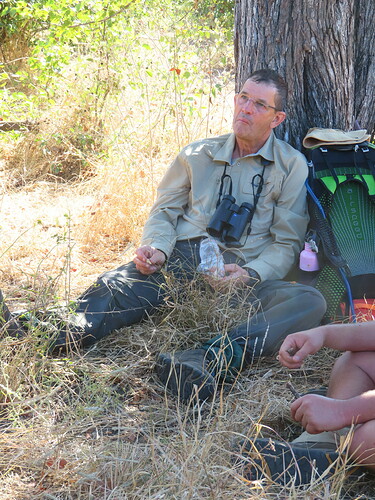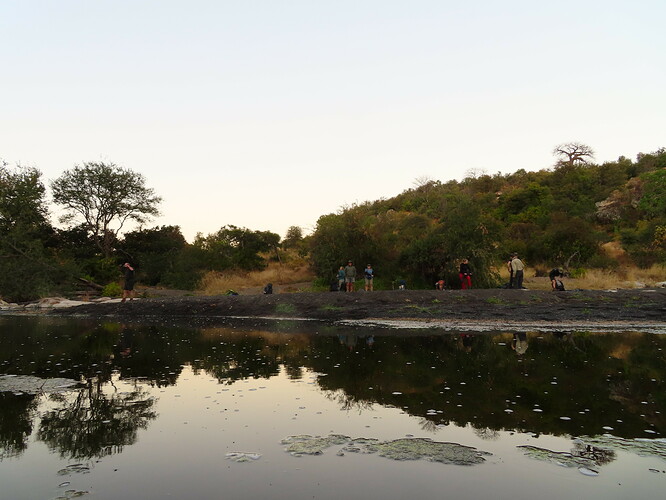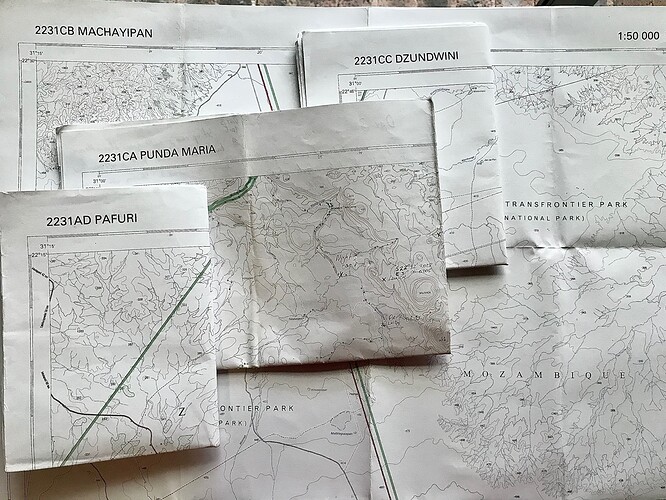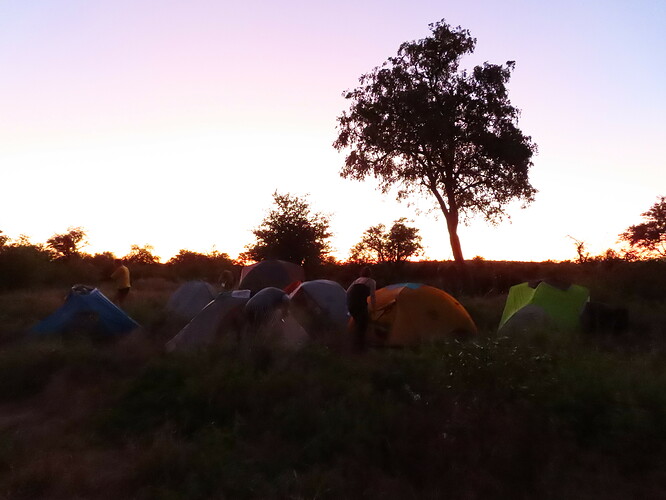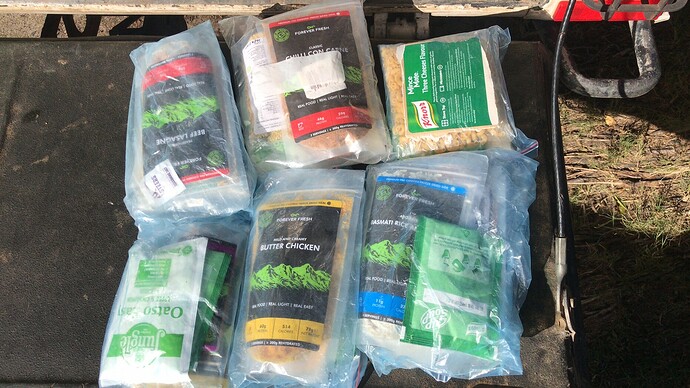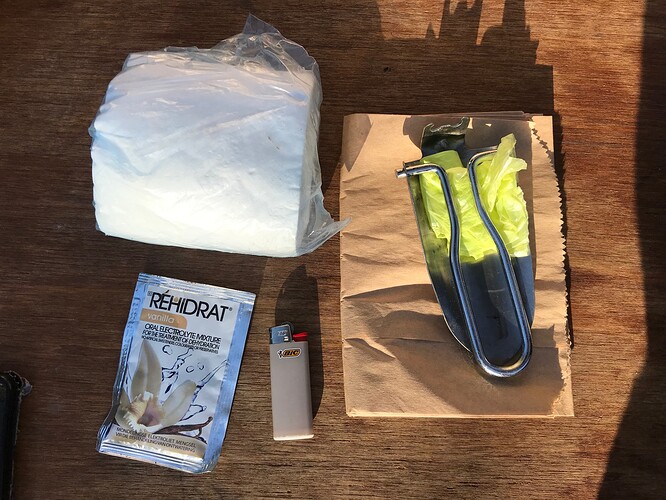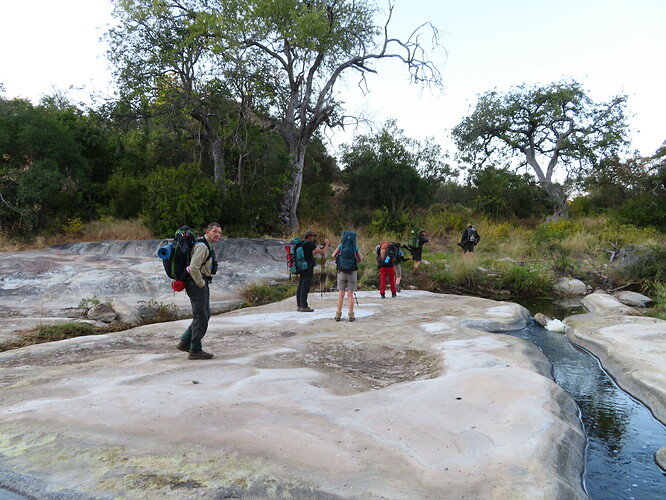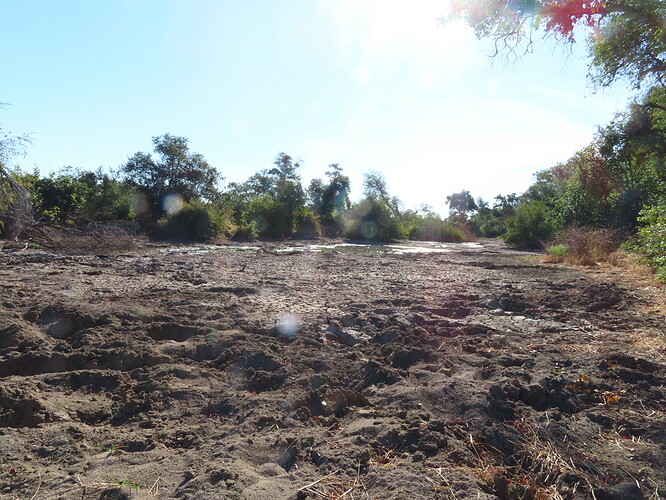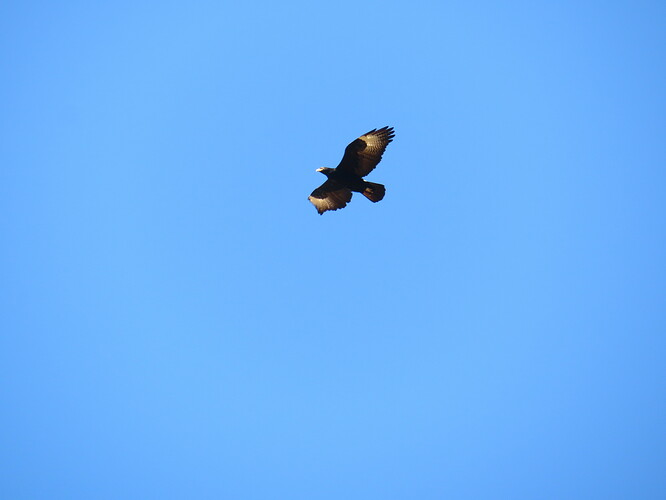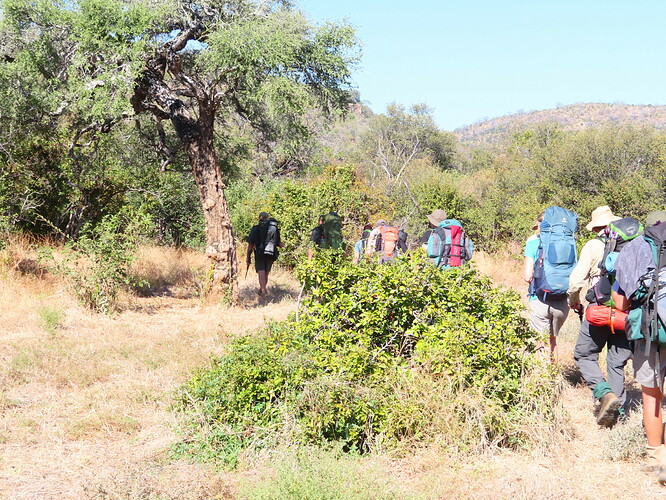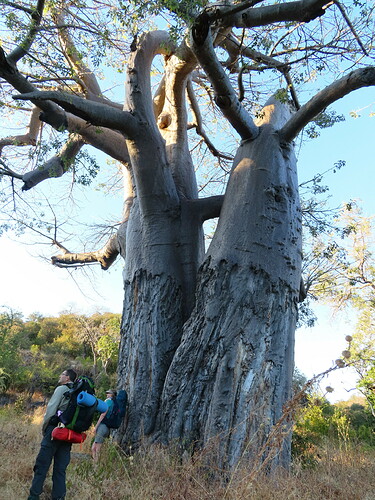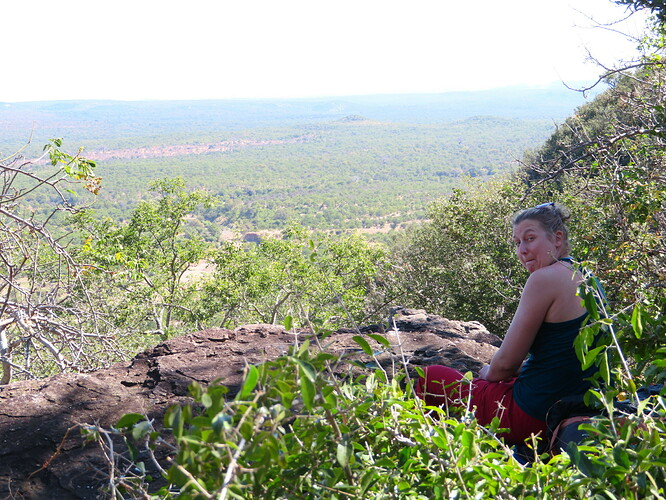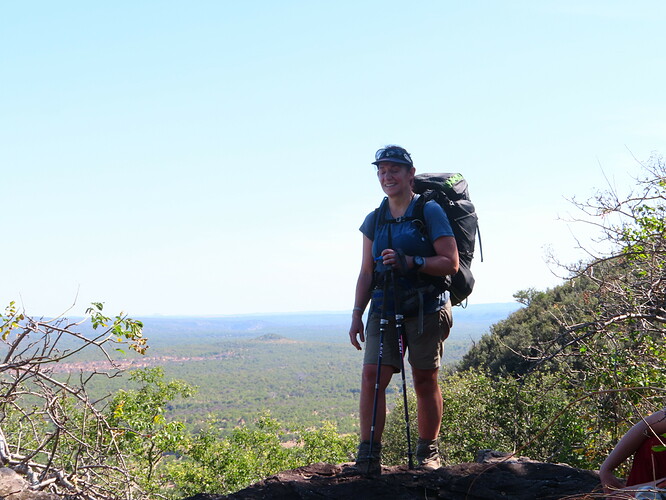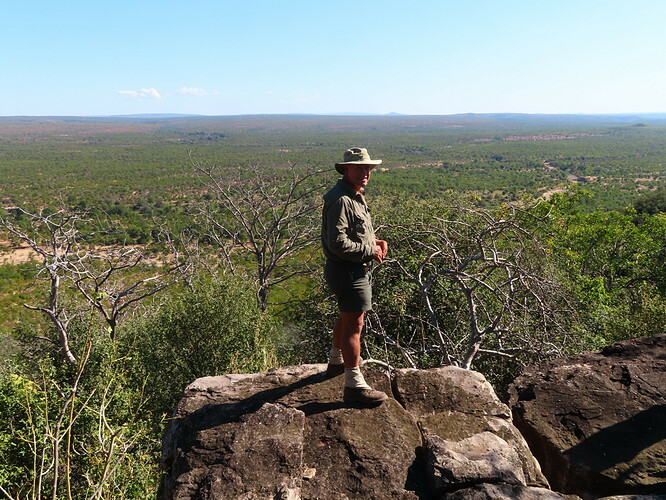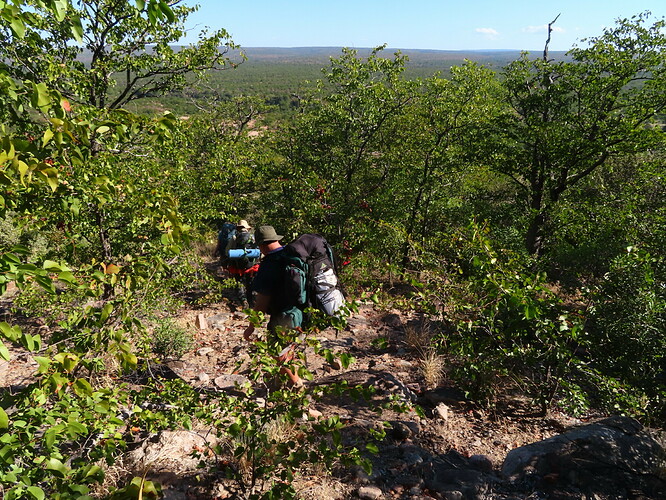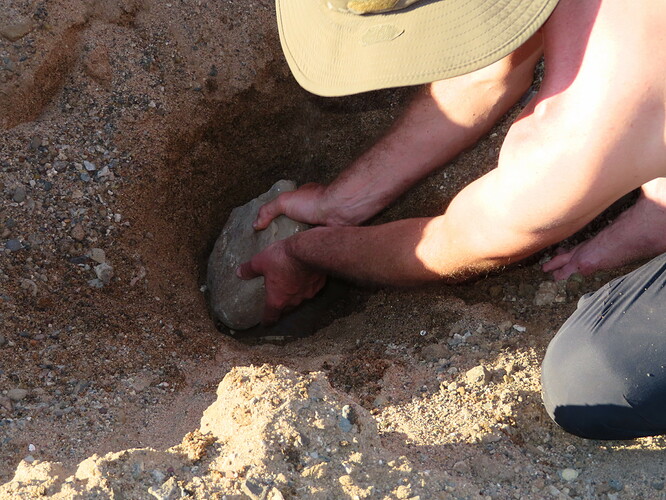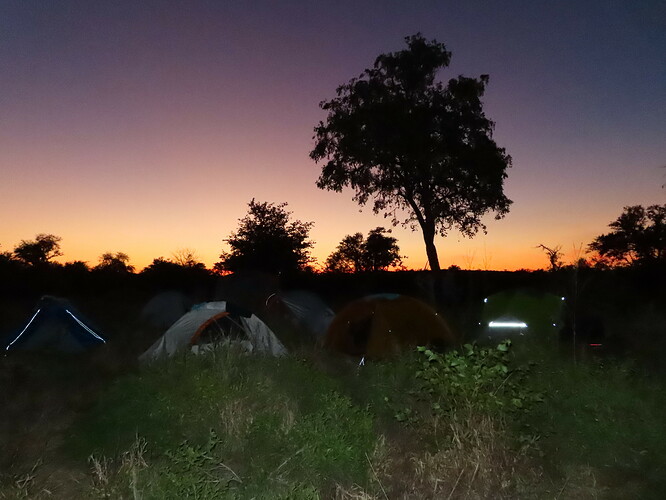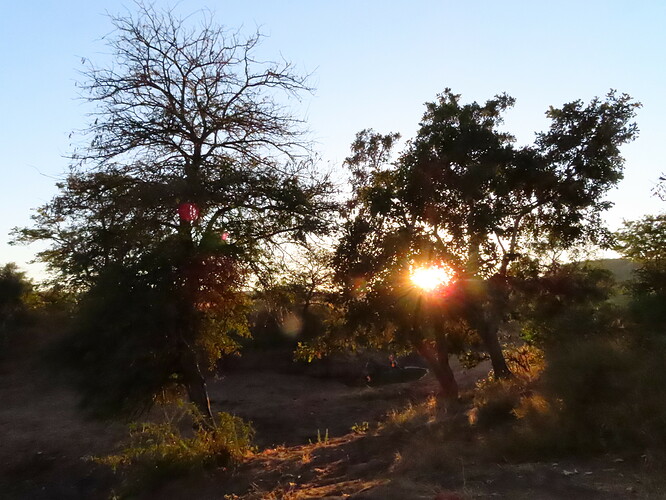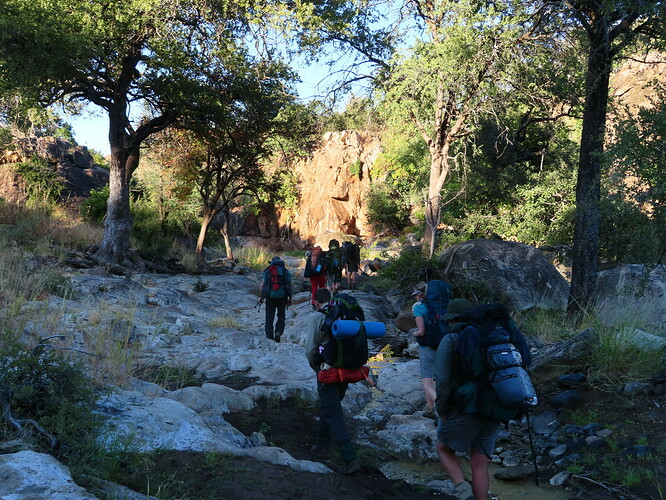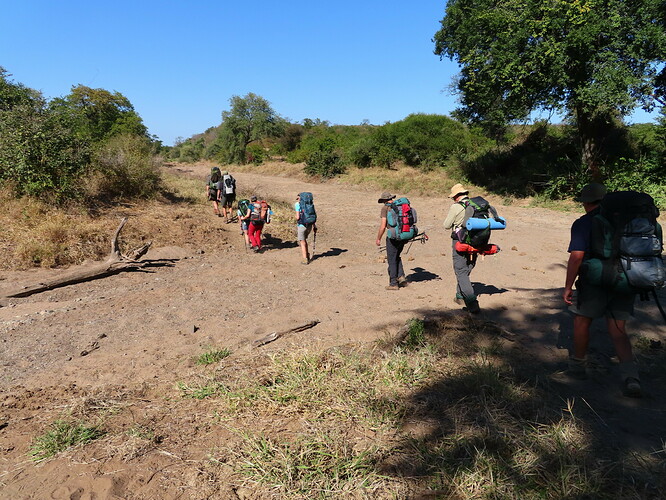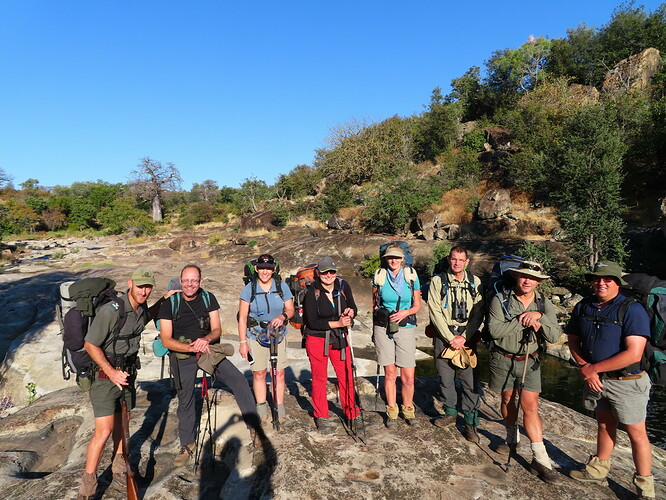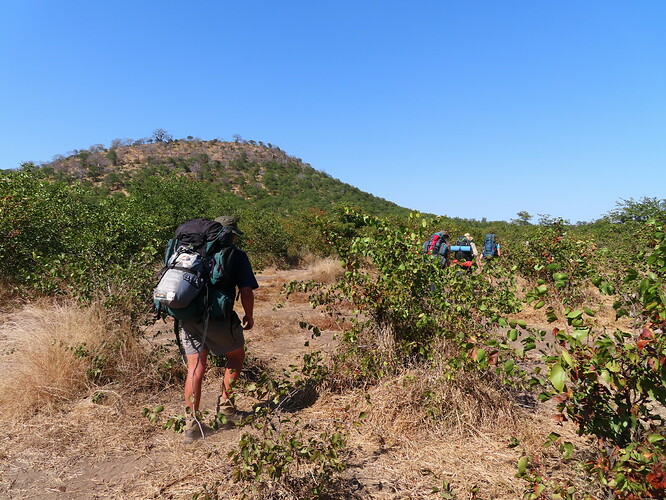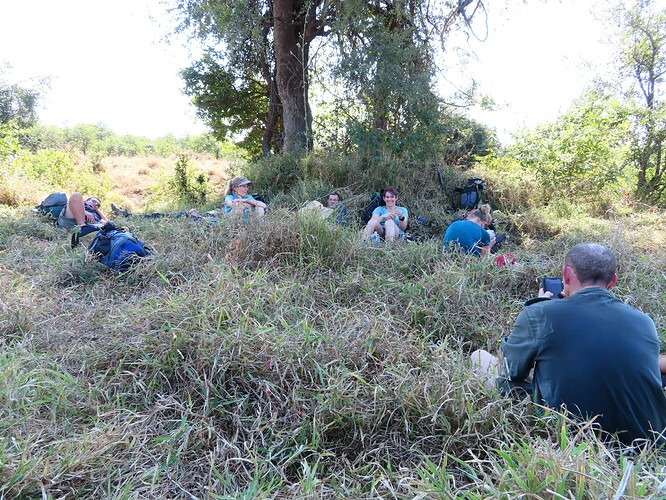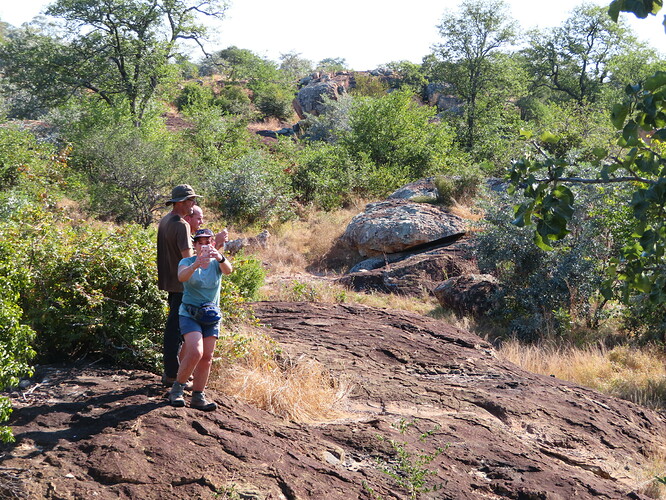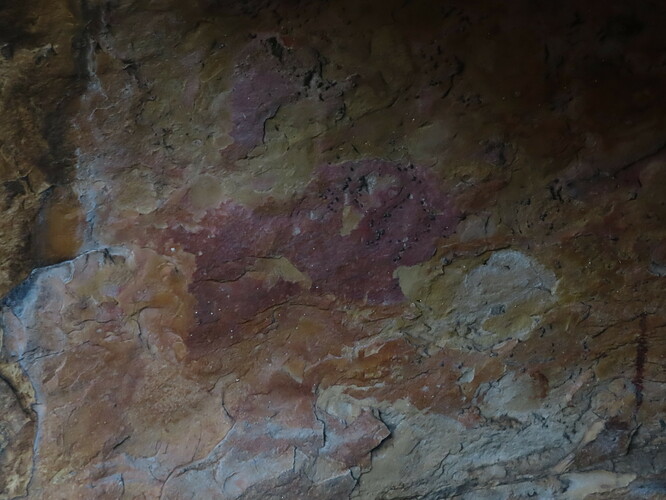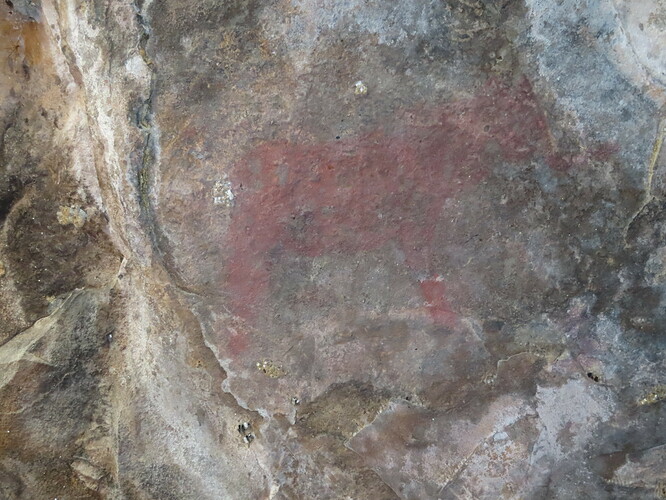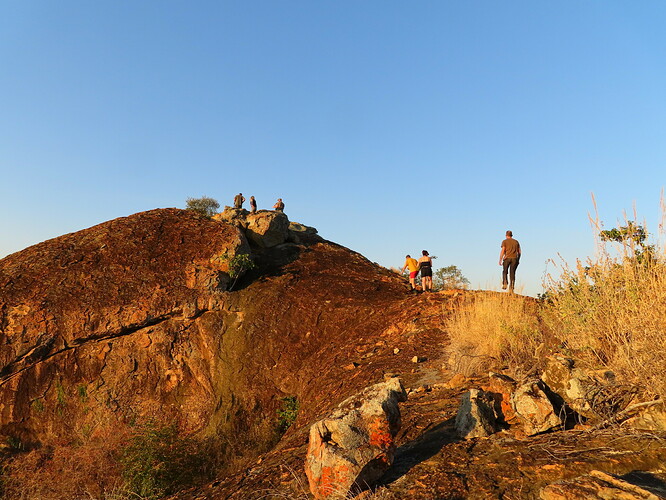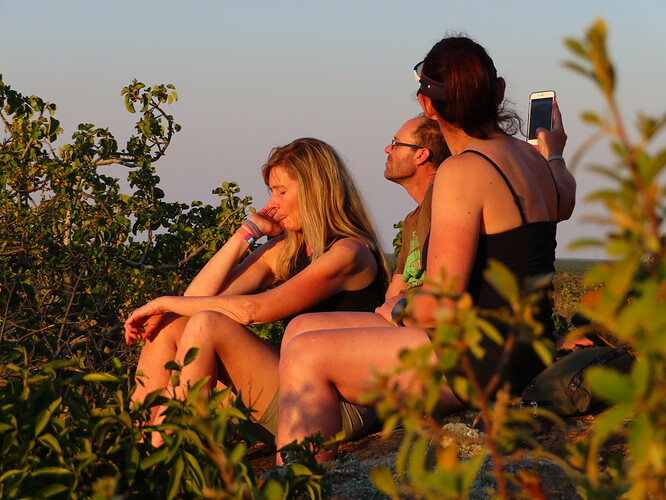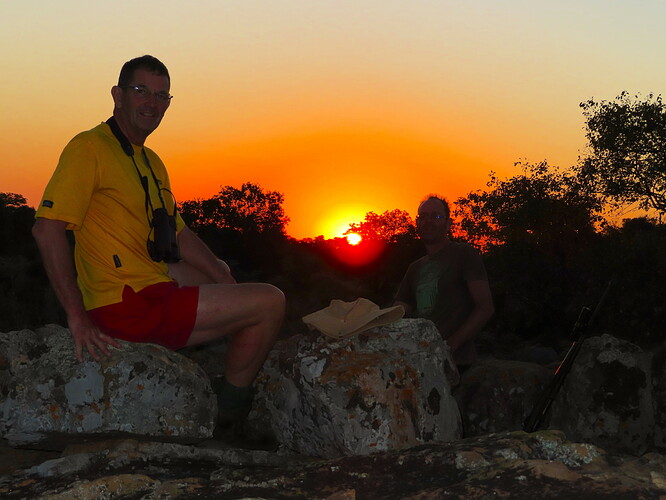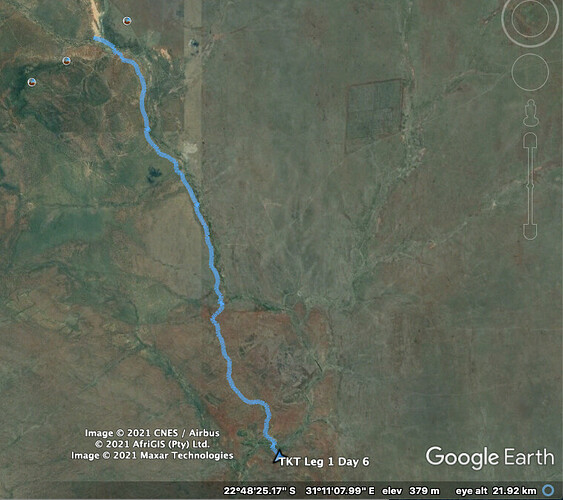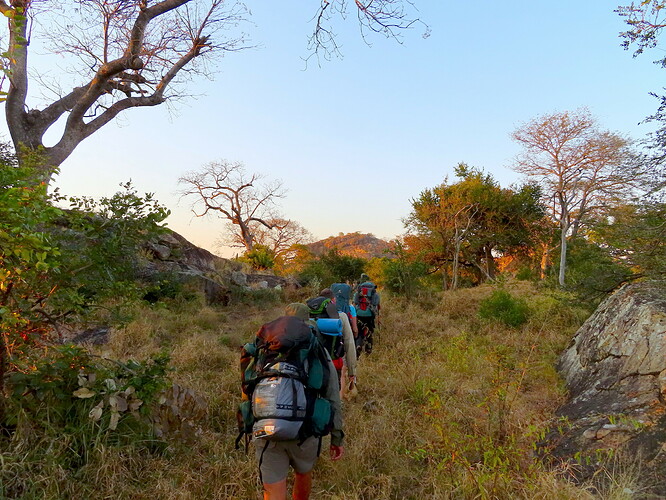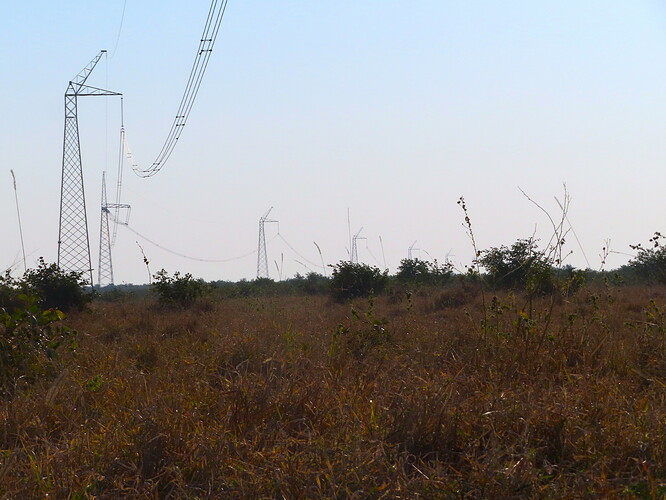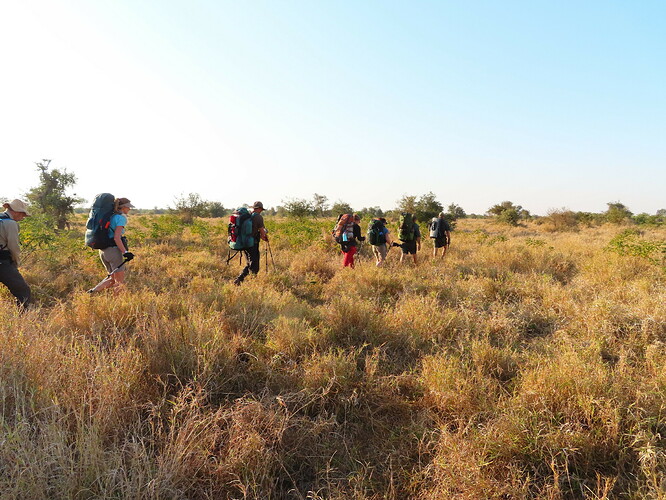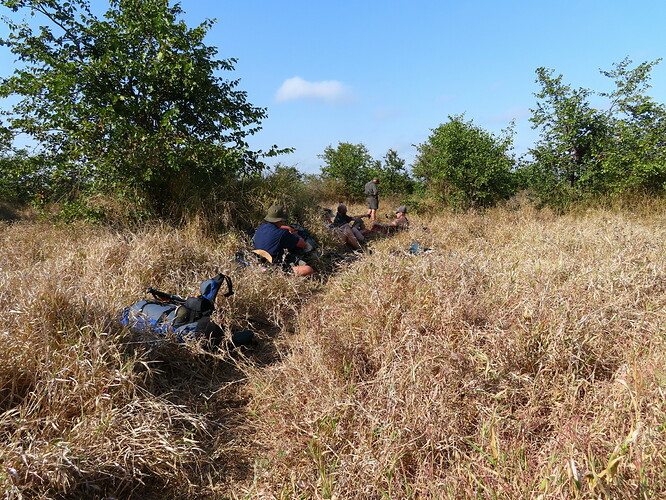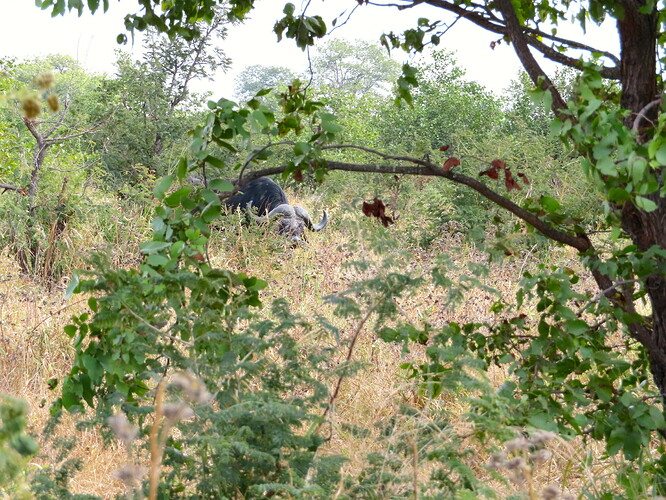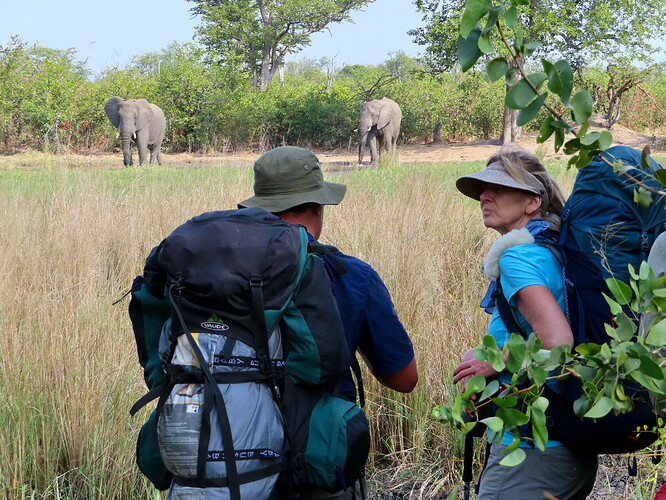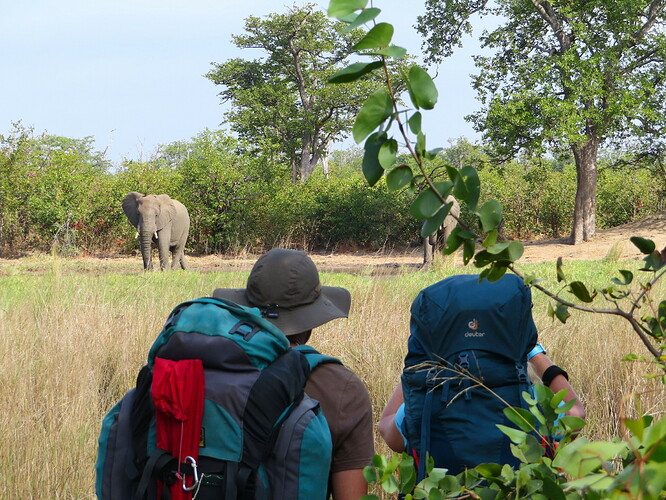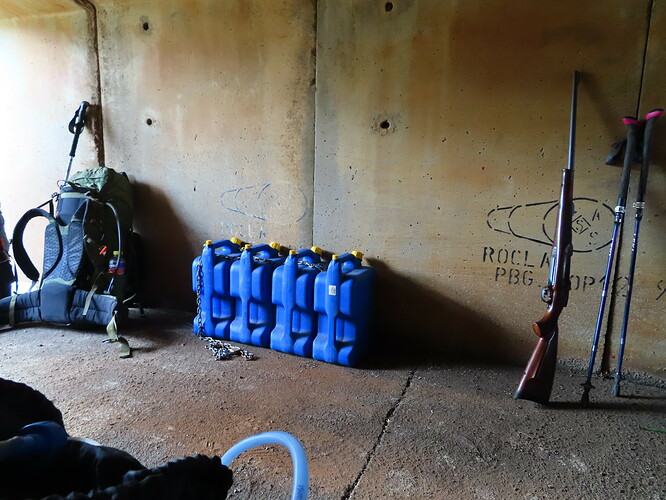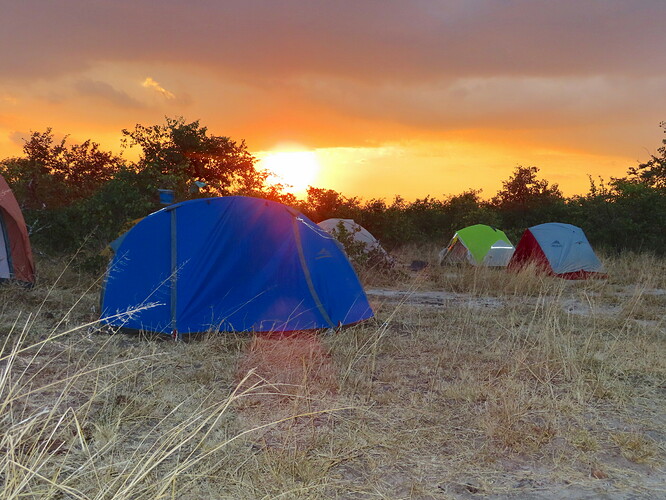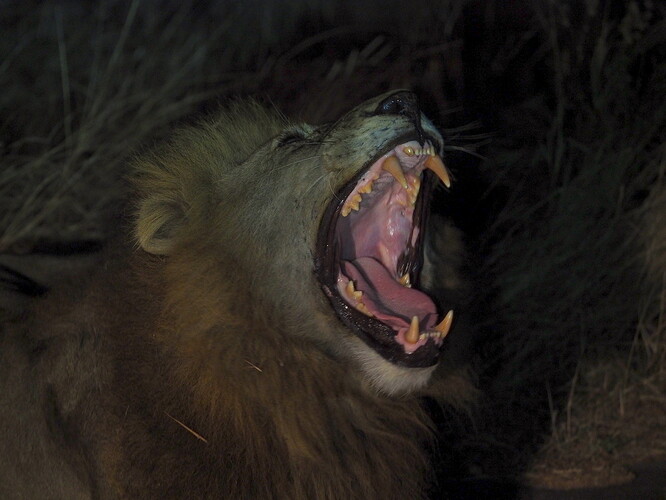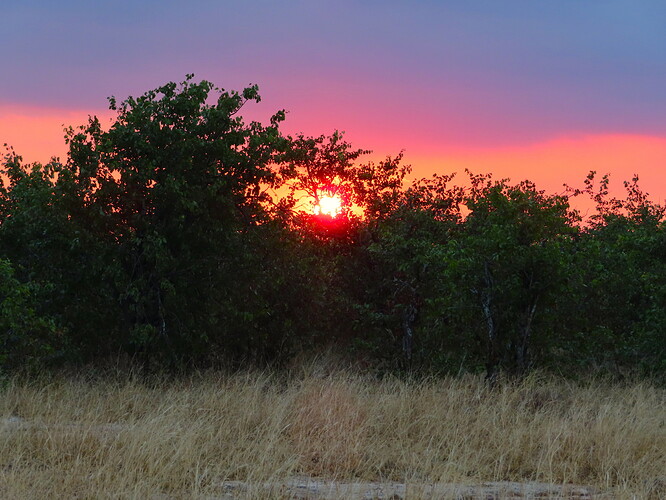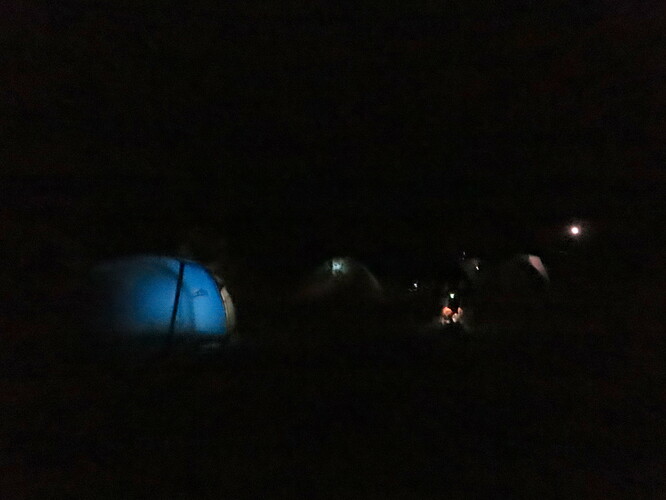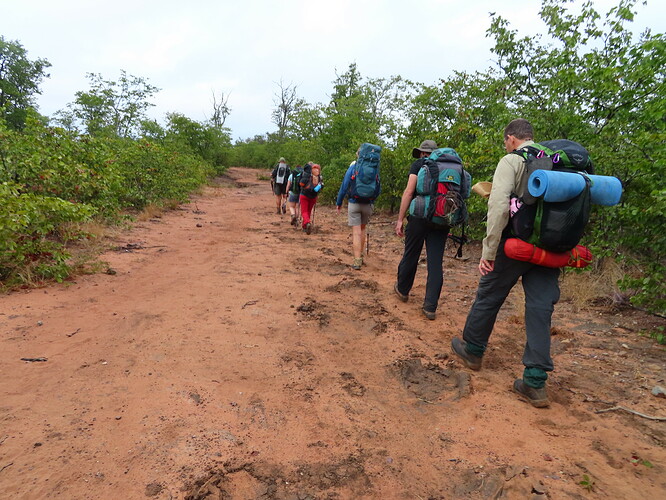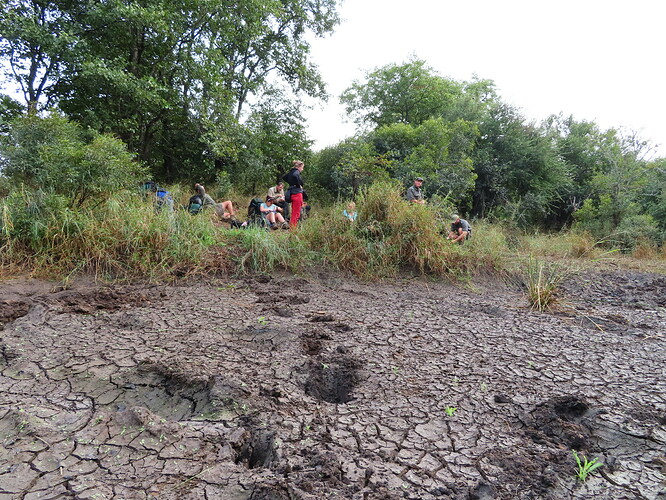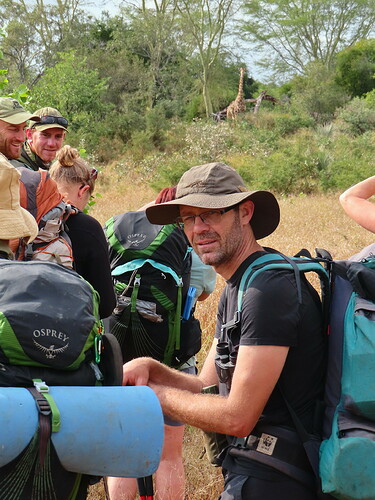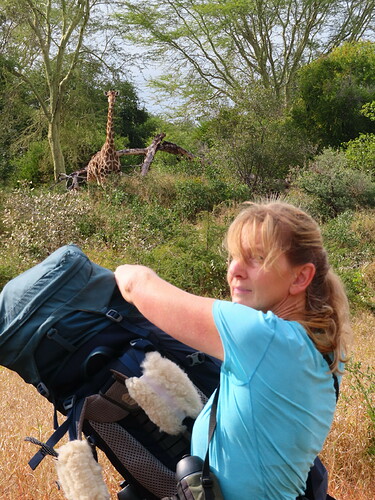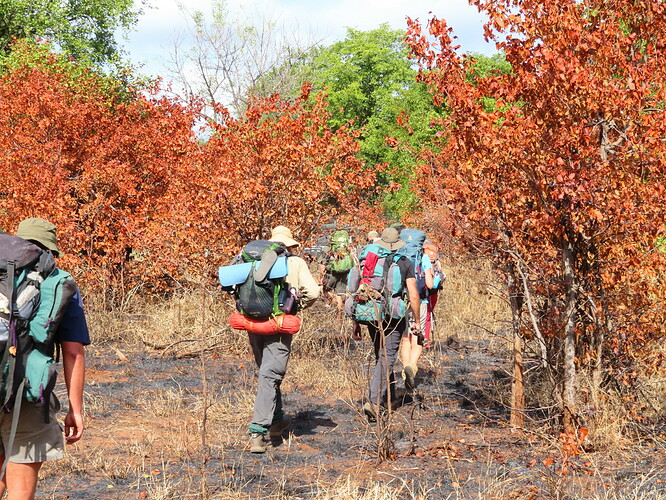So what kit did I carry?
Obviously too much, but here’s a pic of everything except camera and the maps.
The 2x1.5l coke bottles were filled with water together with 2l in the 3l bladder - this gives the bladder sufficient malleability to fit into the crevices of available space in my pack.
Im not going to type it all out - far too boring so here’s a picture of the individual items, some of which I’ll be discussing their pro’s and cons
Starting with the Water filter: I removed the shower head from a Sea2Summit 10l shower and fitted a tube with a
quick disconnect coupling I added the male end to a short length of hose connected to the Sawyer Water filter, and a 1m length of hose on the other side to gravity feed filtered water into bottles. To prevent heavy sediment entering the filter I added a short “snorkel” to the outlet inside the bag.
Its a good system if you want to hang it and leave it to do the filtering for you rather than the schlepping of squeeze bottles, plus it has the added advantage of ensuring that all the water containers had potable water in it to prevent cross contamination but as Im sure people will testify its not perfect and a bit slow, particularly after reverse force flushing the filter…
Can you believe that after using it at least twice a day for a week and throughout the Fishriver Canyon, despite knowing I tried to take photos of it in-situ I still cant find a picture of the set up other than on the right of all the people against the riverbank hanging off a tree stump (zoom in)
I drank from the 1.5L bottles so I have a measurement of how much I was consuming, in reality, with the extra water stops at breaks, I probably drank (and used for cooking) over 4 litres of water a day. Only on the two last days did I need to drink from the bladder.
Sourcing water from a well dug in the ground Now this is hard work, took about an hour to dig out an existing elephant hole, a further 30 minutes of scooping out the brackish water before getting to cool sweet crystal clear water. One “slave” scooping up 500ml cups from the capillary refill of sandy soil a little over 1m down, two pourers decanting into a bottle and then into the drinking bottles for sterilisation and or filtering (some chose to filter others not.)
No-one died and Im pretty sure that no-one got Bilhazia from this…One slave driver oversaw operations and I took photos having unsuccessfully tried to dig a hole from scratch… Lining the well and starting with a really wide area is key - bring on happy childhood memories of sand castles!
As you know my ageing Deuter pack weighs 3kg before we even begin (add an extra 100gm for the 30m of cotton thread and personal sewing kit to fix it because its old and starting to come apart) Its on the list for replacement at some point.
Fortunately it only required attention once and that took up some time one evening on day 3 sitting quietly in my tent under the glare of the
Ultratec bug zapper lantern (of which Im a huge fan and though unnecessary I do take on every camp)
I like maps… No thats not true I love maps and took 1:50,000 took 5 maps for the region we’d be in of which 2 we didn’t cross and we spent the better part of 2 days in the one paper map I didn’t have, but I had downloaded onto Avenza.
I relish writing in the points we stopped at along the way making a couple of reference notes, cross referencing our location with GPS coordinates and a bearing taken from visual points of interest (magnetic declination at this stage largely irrelevant, but used 14˚ west - accurate enough) I know Im a geek at heart, but I cant overstate just how useful the topographic was are and I cant believe people still undertake trails without them.
Tents:
Wow this trip has it all The MSR Hubba 1 and 2 man, Nature Hike Mongar 2 man, Outdoor Elements twister 2 man and a couple of others, as a gear head this was fascinating.
For me the lightweight silicon covered flysheets and mosquito netting interior walls felt a little too tearable but they do come in lighter than mine and with a groundsheet.
There were no issues with the one night that the wind came up, despite two tents not having any tent pegs to save weight… Guys - you can buy
lightweight aluminium ones but the rocks appear to have worked.
My tent, the 2.6kg
First Ascent Luna, weighs 2.8kg without the bag and repair kit, and only 6 tent pegs it has many Pro’s and one con - that it the vestibule area is not rain proof when the zips are open and the rain falls into the foot print of the tent owning to its A shape, this is not an issue in Africa except for alpine conditions and only then while cooking It was great to open both sides and lie under the shade one day lying on my back in the shade Its very roomy and this double entry aspect is a massive positive.
A Quick heads up to First Ascent - Ridwha & Nicole on their support side - they have been brilliant - one of my tent poles had cracked at the end and they sourced a replacement for me of which I now carry 3 spare poles for just in case. Its this quick local support that makes buying from a trusted source so much better.
Food and cooking Ahhh the nourishment that makes or breaks a hike.
This has been on my agenda for literally years, so there was no way I was going to jeopardise the holistic experience with haphazard meals. Pictured is each days rations total weight: 600g portioned into packets and then each meal wrapped tightly in cellophane to retain the structural integrity of the seed crackers
Breakfast: Oat-so-easy, squeeze of peanut butter, together with some coffee grinds for a filter coffee
Snacks: a sachet of Game powder and 75g packet of energade sweets I used one packet of game with 1.5 litres of water from Lunch time, and chewed the sweets throughout the day. On top of this I collected three Baobab pods and sucked the pulp around the seeds
Lunch: 75g seasoned Couscous / Smash / Noodles, with either salami or tuna 2 seed crackers a baby belle cheese and packet of cup-a-soup
Dinner:
Forever Fresh freeze dried meal and a side of starch together with a cup of soup.
Interestingly the total weight of the plastic packaging was 160g
Stoves: Yes everyone took one system each and we could have saved weight by sharing.
I lent my Fire maple FMS 105 to a hiker whose Cadac 206 Lannister system was leaking which worked a bomb and I used my MSR Windburner Duo pictured. Others used the Jetboil 1l variant. Honestly for personal hiking Id recommend the Jetboil more than anything else I only have the MSR as I cater for a family and need the 2l capacity. I do however really prefer the off system canister with the separate hose.
Lavatory system:
Guys every tree is a Lavatree as the saying goes.
This is my toilet bag contents are 3/4 roll of toilet paper, a wax lined paper bags a folding stainless steel trowel and a lighter
One digs a “scat hole” approximately 15 cm deep 60+m uphill of a water source.
The toilet paper needs to be combustible hence the lighter.
After your’re done you burn the used toilet paper in the hole and once extinguished bury it again, placing a rock on top of the loose soil.
If its not safe to light the fire there, then place the used paper in one of the wax lined packets for burning later in a safe area…
The sunsets were tremendous especially given the block burning of fires in the Kruger, supplying natures own Neutral density Graduate filters!
